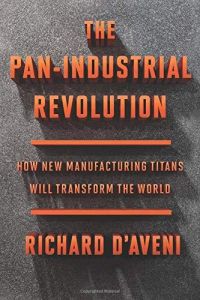Join getAbstract to access the summary!

Join getAbstract to access the summary!
Richard D'Aveni
The Pan-Industrial Revolution
How New Manufacturing Titans Will Transform the World
Houghton Mifflin Harcourt, 2018
What's inside?
In the future, 3D printing will rewrite the rules of mass production and may revolutionize the economy.
Recommendation
Richard D’Aveni of Dartmouth’s Tuck School of Business paints an almost breathless vision of how a cutting-edge manufacturing technology could transform everything from the production of consumer products to the function of the global economy. The new technology, called additive manufacturing (AM), is easy to get excited about. The AM category covers 3D printing and other methods that make products by “printing” them, layer by layer, or in some cases, molecule by molecule. As the technology advances, it is rapidly becoming more mainstream. D’Aveni argues that it will eventually dominate manufacturing, setting off a chain of disruption as AM replaces traditional economies of scale with economies of scope. He foresees the rise of the “pan-industrials,” titanic companies that will dominate the world economy by building value chains of unprecedented size and complexity and constructing the platforms – the mix of software, data analytics, and social networking – that will make it all run.
Summary
About the Author
Richard D’Aveni is the Bakala Professor of Strategy at the Tuck School of Business at Dartmouth College. For 30 years he has been a top international strategy consultant.
















Comment on this summary